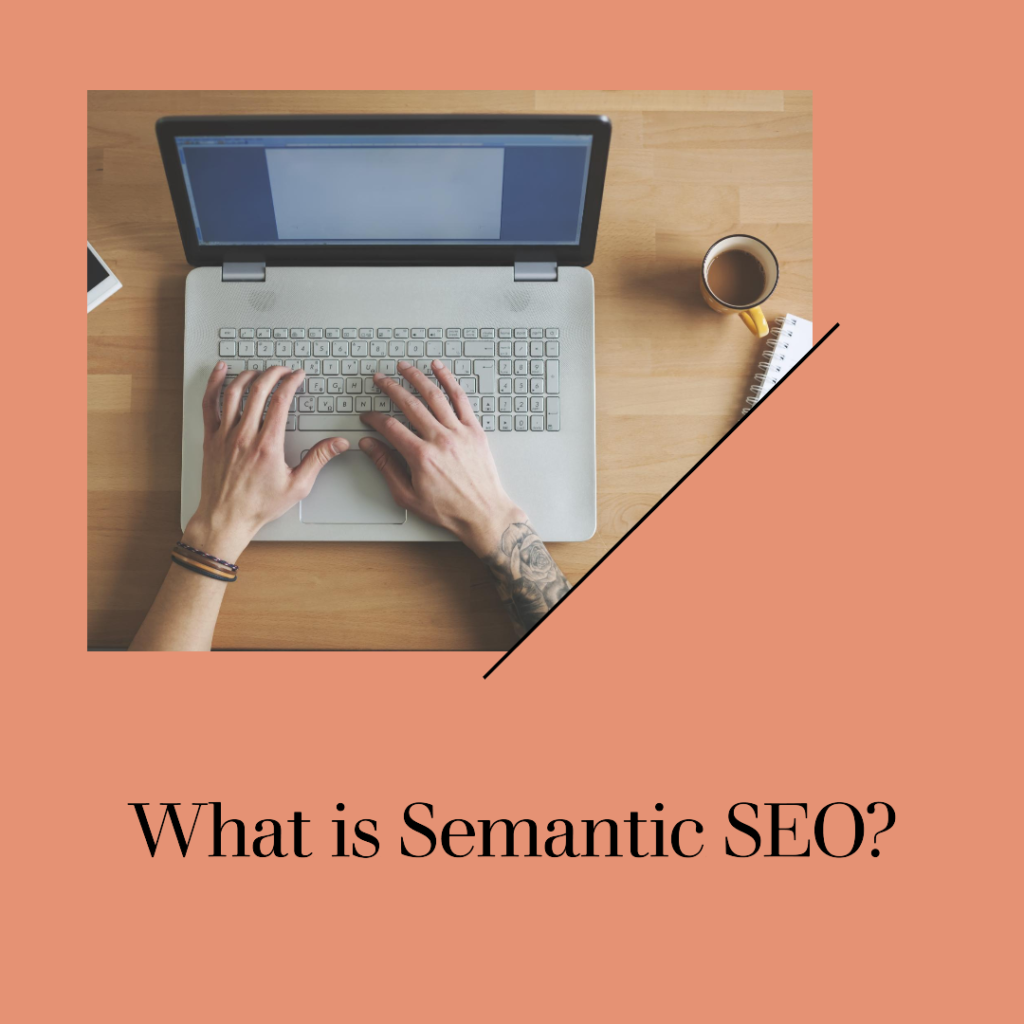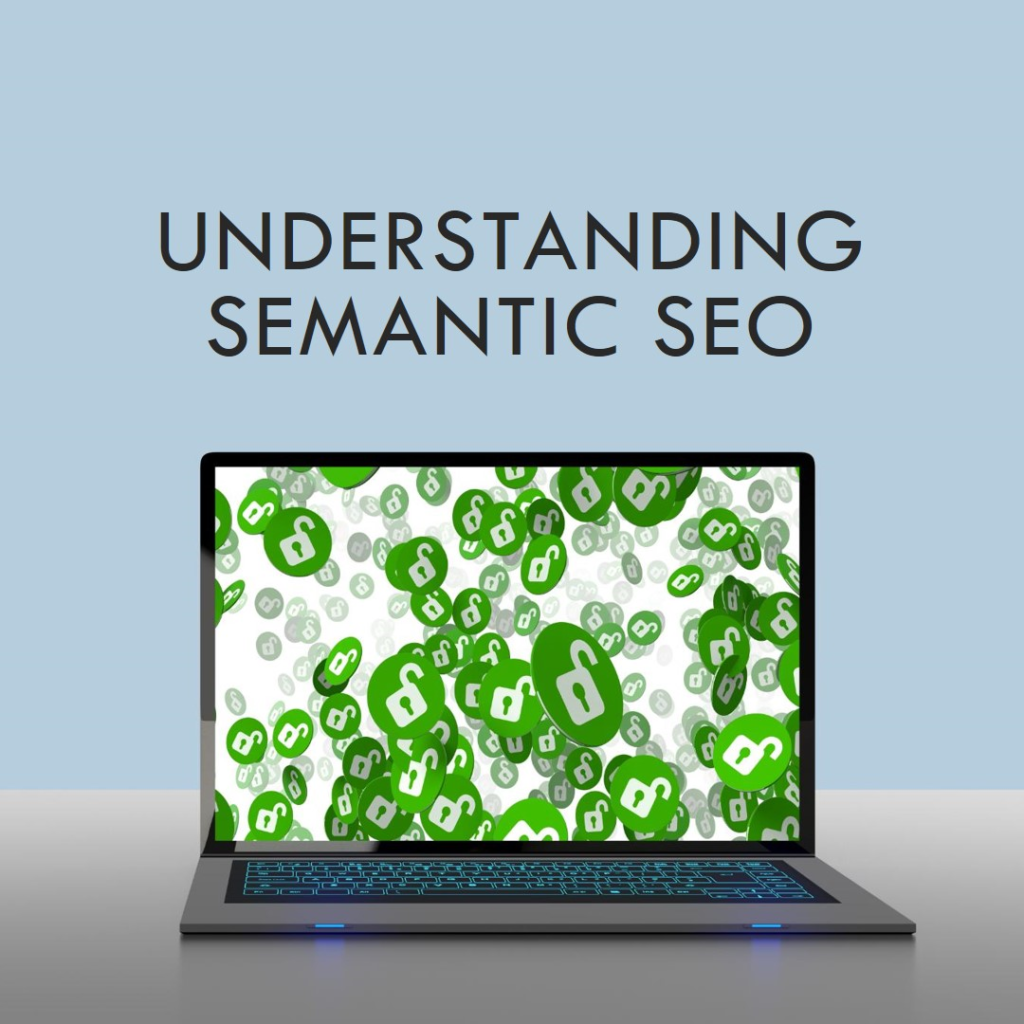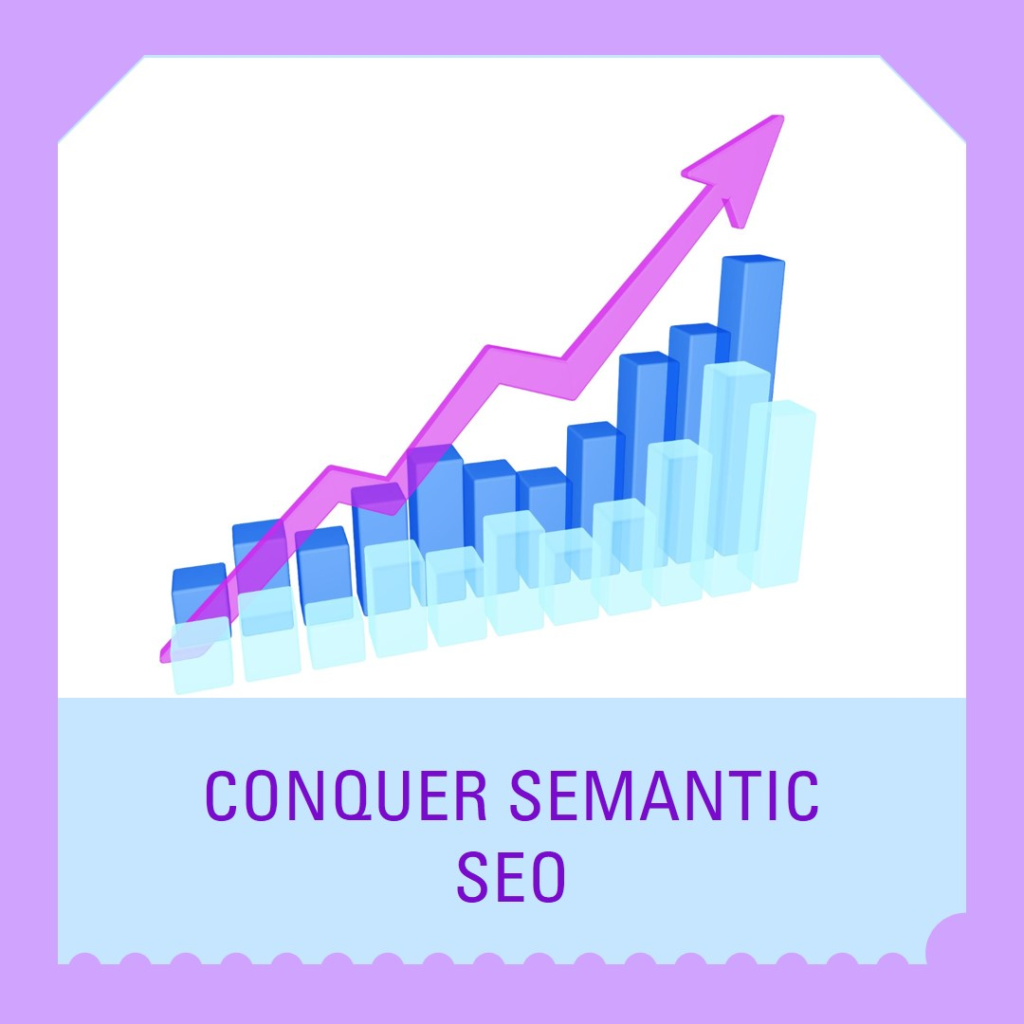Semantic SEO creates content that aligns with user intent and provides valuable information in a natural, contextually relevant manner.

Introduction to Semantic SEO
It is a search engine optimisation (SEO) approach that focuses on understanding the meaning of words and phrases aside from matching keywords.
Ultimately, Semantic SEO helps search engines better understand the content of a website and deliver more accurate search results to users. It also aims to improve search visibility, improve user experience, and guarantee long-term sustainability for websites.
Elements of Semantic SEO
As explained above, Semantic SEO goes beyond just keywords. It focuses on the meaning behind those keywords and how they relate to each other. Grasping the context and intent of a search query allows search engines to deliver more accurate and helpful results to users.
Entity-based Keyword Research
- Identify the main entities or concepts related to your business or industry.
- Use tools like Google’s Keyword Planner to find relevant keywords and phrases.
- Look for semantic variations and related terms that users might use in their searches.
Structured Data Markup
- Execute structured data markup (schema.org) on your website to provide search engines with context about your content.
- Use schema markup to markup entities such as products, reviews, events, and more.
- This helps search engines understand the content of your website better and can lead to rich snippets in search results.
Content Optimisation
- Create high-quality, comprehensive content that covers a wide range of related topics.
- Use natural language and include semantic variations of your target keywords throughout your content.
- Focus on answering user’s questions and providing valuable information that satisfies their search intent.
Semantic HTML
- Use semantic HTML markup (such as <header>, <footer>, <article>, <section>, etc.) to provide structure and meaning to your content.
- This helps search engines better understand the hierarchy and context of your content.
Contextual Linking
- Link to other relevant pages within your website using descriptive anchor text.
- This helps search engines understand the relationships between different pages and topics on your website.
User Engagement Signals
- Observe user engagement metrics such as click-through rate (CTR), bounce rate, and dwell time.
- High user engagement signals to search engines that your content is relevant and valuable to users.
How Semantic SEO Works

Here’s a breakdown of how Semantic SEO operates and why it’s important for your website’s success:
- Contextual Relevance: Semantic SEO considers the context in which keywords are used. It evaluates the relationship between words and their surrounding content to determine relevance.
- Entity Recognition: Search engines now identify entities, such as people, places, and things, mentioned in content. Recognising these entities, search engines can provide more accurate and meaningful search results.
- Natural Language Processing (NLP): With advancements in NLP, search engines can understand conversational queries better. This means your content should focus on answering questions in a natural, conversational manner rather than just stuffing keywords.
- Structured Data Markup: Adding structured data markup to your website helps search engines interpret your content more effectively. This markup provides additional context and makes it easier for search engines to display relevant information in rich snippets.
- User Experience (UX): Semantic SEO emphasises providing a seamless user experience. Websites that offer valuable, user-friendly content are favoured by search engines, leading to higher rankings.
Tips to Improve Semantic SEO
Upgrading your content for semantic search can attract more targeted traffic and improve your site’s visibility. Here are some simple tips to improve your semantic SEO plan:
Understand User Intent
- Keyword Research: Identify relevant keywords and phrases that align with your target audience’s search intent.
- Long-tail Keywords: Focus on long-tail keywords that reflect specific queries and user needs.
- Semantic Keywords: Look for related terms and synonyms that expand the semantic relevance of your content.
Create High-Quality Content
- Rich Content: Produce comprehensive and informative content that covers a wide range of related topics.
- Structured Data Markup: Apply structured data markup to help search engines better understand the context of your content.
- Natural Language: Write in a natural, conversational tone that echoes with your audience and embodies semantic variations of keywords.
Strengthen On-Page Elements
- Title Tags and Meta Descriptions: Create convincing title tags and meta descriptions that accurately describe the content and assimilate semantic keywords.
- Header Tags: Use H1, H2, and H3 tags to organise your content and highlight important topics and subtopics.
- Internal Linking: Create a logical internal linking structure to connect related content and reinforce semantic connections.
Refine User Experience
- Mobile-Friendly Design: Attest your website is improved for mobile devices to provide a seamless user experience.
- Page Speed: Improve page loading speed to reduce bounce rates and better user satisfaction.
- Readable Content: Use clear formatting, bullet points, and concise language to make your content easy to read and understand.
Mark Semantic Technologies
- Latent Semantic Indexing (LSI): Embody LSI keywords and phrases to strengthen the semantic relevance of your content.
- Natural Language Processing (NLP): harness NLP techniques to examine user queries and provide relevant answers.
- Schema Markup: Execute schema markup to provide search engines with structured data about your content, such as reviews, ratings, and product information.
Monitor and Adapt
- Analytics: Regularly monitor your website’s performance using tools like Google Analytics to track keyword rankings, traffic trends, and user engagement metrics.
- Algorithm Updates: Stay informed about changes to search engine algorithms and adapt your semantic SEO program accordingly.
- Continuous Improvement: Continuously perfect and update your content to maintain its relevance and effectiveness in meeting user needs.
Benefits of Semantic SEO

Using Semantic SEO can yield a myriad of benefits for your website. This can be achieved in different ways:
More Search Visibility
Semantic SEO can significantly improve your website’s visibility on search engine results pages (SERPs) by:
- Understanding user intent: Grasping the meaning behind search queries, Semantic SEO helps your content appear for relevant searches, increasing the likelihood of clicks.
- Targeting semantic variations: Combining related terms and synonyms naturally into your content can attract a broader audience searching for similar topics.
- Appearing in rich snippets: Structured data markup enables your website to feature in rich snippets, providing users with quick answers and increasing click-through rates.
Better User Experience
Semantic SEO is about pleasing search engines and creating a better experience for your website visitors:
- Relevant content: Focusing on the meaning behind keywords, Semantic SEO encourages the creation of high-quality, relevant content that meets the needs of your audience.
- Easy navigation: Semantic HTML markup polishes the structure and clarity of your website. It makes it easier for users to find the information they’re looking for.
- Contextual linking: Linking to related content within your website can guide users to explore further, enriching their overall experience and reducing bounce rates.
Competitive Advantage with Semantic SEO
Staying ahead of the competition is important; Semantic SEO offers several advantages that can give you an edge over your competitors:
- Increased traffic: Appearing in more relevant searches and attracting clicks through rich snippets, Semantic SEO can drive more organic traffic to your website.
- Higher conversion rates: Providing users with the information they’re looking for and delivering a seamless experience, Semantic SEO can lead to higher conversion rates and ultimately, more sales.
- Brand authority: Consistently delivering valuable, authoritative content can establish your brand as a trusted source within your industry, building credibility and loyalty among your audience.
Overcoming Semantic SEO Hurdles

Let’s look at what hurdles website owners.
Complexity of Semantic Search
Semantic search can be complex, requiring a shift in mindset from traditional SEO practices. It involves comprehending user intent, context, and the connections between words and topics.
Natural Language Processing (NLP)
NLP algorithms, such as Google’s BERT, are at the forefront of Semantic SEO. However, understanding and effecting these algorithms effectively can be challenging for website owners. You need to use NLP tools and plugins to help you improve your content for semantic search. These tools can assist with keyword research, content analysis, and optimisation plans.
Structured Data Application
Structured data markup, such as Schema.org, provides search engines with additional context about your content. However, integrating structured data into your website can be daunting for those unfamiliar with coding or markup languages.
Explore tools and plugins that simplify the execution of structured data markup on your website. Platforms like WordPress offer plugins that streamline the process, even for those with limited technical expertise.
Content Quality and Relevance
Semantic SEO prioritises high-quality, relevant content that satisfies user intent. For your content to meet these strict criteria requires time, effort, and a deep understanding of your readers and customers. Prioritise creating high-quality, relevant content that aligns with the interests and needs of your target audience.
Conduct thorough keyword research to understand the language your audience uses and tailor your content accordingly.
Keeping Up with Algorithm Updates
Search engine algorithms are constantly changing to better understand semantic cues. Staying abreast of these updates and adjusting your SEO system accordingly is decisive for maintaining visibility in SERPs.
Invest in Education
Take the time to learn about semantic search and its implications for SEO. Resources such as online courses, blogs, and webinars can provide valuable insights into this evolving field.
Conclusion on Semantic SEO
Understand user intent, provide valuable content, and improve context and meaning to elevate your website’s visibility.
Traditional SEO tactics are continuously being outpaced by more sophisticated algorithms and user behaviours. In response to these changes, the concept of semantic SEO has emerged as a game-changer for businesses striving to upgrade their online presence.
If you liked this article, then please subscribe to our YouTube Channel for video tutorials and more. You can also find us on LinkedIn, Twitter and Pinterest.




